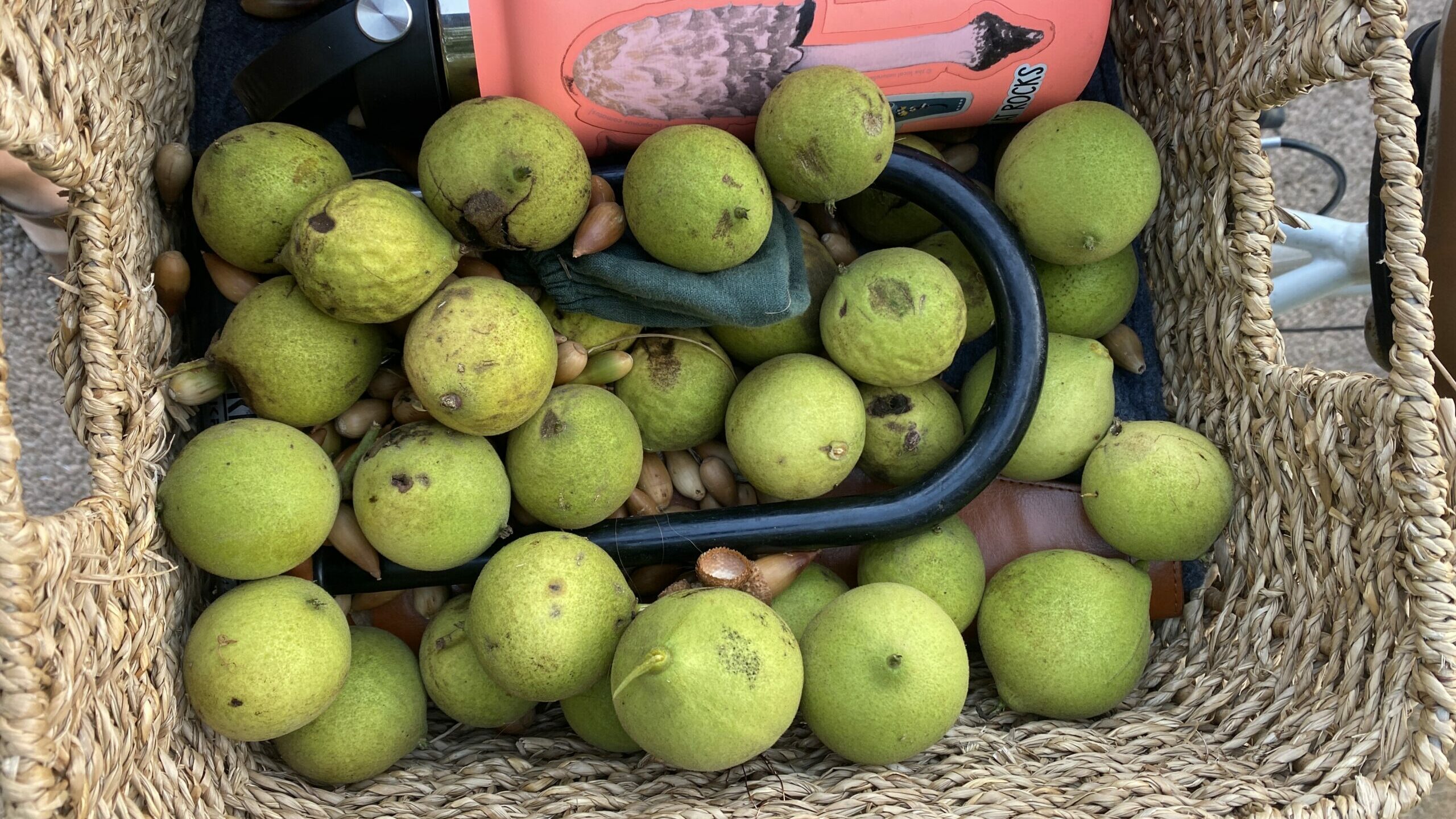People have lived along the central coast of present-day California for millennia, surviving and thriving off of the resources that continue to surround us. Today, many of our region’s greatest naturalists are fishers, gardeners, and artists who connect with the natural world through their hobbies, work, or craft. Foraging is for many an entryway into a deeper connection with nature.
Negative Impacts of Foraging
Habitat degradation, increased frequency and intensity of fires, development, and climate change are all stressors that impact native species and reduce vital resources. Foraging has become a popular movement in recent years, often to the extreme detriment of widely sought-after plants like ginseng and white sage.
If you choose to forage, you can ensure that you are doing so in an ethical manner that supports the future health and sustainability of our environment.
Foraging Ethics 101
1. Protect threatened species
When identifying plants to forage, confirm that population numbers are healthy to avoid causing additional challenges for organisms already under stress. While many local native species have ethnobotanical qualities, there are also many non-native and invasive species that do, too. By selecting non-native species for forage, you are protecting local natives.
Resources: California Native Plant Society’s Rare Plant Inventory and Calscape.
2. Identification is Key
Never forage something unless you are certain of its ID. Even if you do not plan on consuming the item, if you get the ID wrong you could risk removing something that is rare or threatened. Use three or more points of identification, rather than one characteristic. Some things to consider include: bloom, stem, bark, color, smell, habitat, soil conditions, life cycle, and, in the case of mushrooms, spore prints.
Resources: Jepson eFlora identification key for California native plants, iNaturalist community science database and identification tool, Mushrooms of the Redwood Coast by Noah Siegel and Christian Schwarz, and Fungus Federation of Santa Cruz.
3. Only Take What You Need, and Never Too Much
When foraging for a particular use, only take what you need. More importantly, never take more than what the environment can afford to give. Generally, only take one-tenth from any patch you see, and never from the only patch you find.
It’s a reciprocal relationship. We have a responsibility to take care of this plant—to be responsible for them. So it’s not about going out and just randomly taking. That’s really disrespectful, and it should never be done that way.
Chairman Valentin Lopez, Amah Mutsun Tribal Band
As quoted in How Foragers Reconnect with the Land by Erin Malsbury
4. Know Before You Go
Many parks and open spaces have regulations about or against foraging. It is important to know what the rules are for a given space before foraging.
5. Be Safe
Avoid harvesting near busy roads or hazardous sites and be mindful of any potential pollutants or contaminants that the organisms you’re harvesting might have been exposed to, such as pesticides and heavy metals.
Note About Mushrooms
Mushrooms are the fruiting bodies of a fungal organism. There are different schools of opinion about whether it is better to cut a mushrooms above the soil, or pluck it entirely. If you are picking the mushroom to identify it, it is best to try to remove it in its entirety with as little damage to the surrounding area as possible. Always leave the area where you have picked from tidy. Picking older mushrooms and leaving younger ones is a good way of allowing the most amount of fruiting bodies to go through their full life cycle. Carry your mushrooms in a woven basket to let them continue to drop spores as you walk (this is also better than using plastic bins or bags for the shelf life of your mushrooms).

